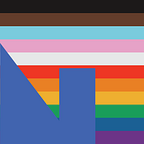Gravitational waves: A timeline to discovery
The first direct detection of gravitational waves in September 2015 came on the back of almost a century of theoretical and practical science…
GRAVITATIONAL WAVES: Timeline to discovery
1916: Albert Einstein first proposes the existence of gravitational waves as part of his general theory of relativity. Many researchers doubt that they exist at all, believing them to be a mathematical quirk.
1957: Physicists Felix Pirani, Hermann Bondi, and Richard Feynman predict that gravitational waves might be detected by a ‘sticky bead argument’. The idea being that if a gravitational wave passed through a stick with a bead on it, it would cause the bead to move back and forth and heat up both the bead and stick with the friction generated.
1962: Russian scientists ME Gertsenshtein and VI Pustovoit published a paper proposing ‘interferometers’ as a way to detect gravitational waves.
1967: Rainer Weiss (one of LIGO’s co-founders) proposes a method that would use laser beams to measure the stretching and squashing of space caused by a passing gravitational wave. They were working independently of ME Gertsenshtein and VI Pustovoit, who proposed something similar in 1962.
1969: Joseph Weber claims to have detected gravitational waves using a device called a resonant bar detector, but no one can replicate his results.
1974: Rainer Weiss meets physicist Kip Thorne and convinces Thorne that a laser-based instrument would give them the best chance of finding gravitational waves. They start working on the project that would become LIGO.
1978: Russell Hulse and Joseph Taylor provide the first experimental evidence for the existence of gravitational waves by observing two neutron stars orbiting each other (a binary system). They noticed that, rather than remaining in a stable orbit, they were moving closer together (because they were losing energy by emitting gravitational waves) at exactly the rate predicted by Einstein’s theory. The discovery earned Hulse and Taylor the 1993 Nobel Prize in physics.
1984: Kip Thorne, Ronald Drever, and Rainer Weiss found the LIGO (Laser Interferometer Gravitational-wave Observatory) Project.
1990s: Construction begins on LIGO — two L-shaped detectors with four-kilometre-long arms (one in Washington and one in Louisiana), along with gravitational wave detectors in Europe (the VIRGO and GE600 detectors). The idea being that, when a gravitational wave passes through, the arms will lengthen and shorten by a fraction — the precise shift will be measured by lasers travelling along the arms.
2001: LIGO begins operations. At the end of its run in 2010, as expected, LIGO had found no evidence of gravitational waves. LIGO had proved the technology worked — it just needed to be more sensitive.
2007: The VIRGO laser interferometer based in Italy, designed to detect gravitational waves begins operation.
2010: LIGO begins upgrades to become Advanced LIGO. This new facility will be ten times more sensitive than the old one, and includes technology from the UK-German GEO600 detector and from Australia.
2011: VIRGO upgrade commences that will eventually improve the sensitivity by a factor of ten.
2015: In September, Advanced LIGO begins its first engineering and test run. Although only operating at less than half its final sensitivity, it detects its first gravitational wave event on September 14.
2015: LISA Pathfinder is launched — a test bed mission for the first space-based gravitational wave detector. LISA Pathfinder will test technology for the planned LISA (Laser Interferometer Space Antenna) mission.
2015: On December 26, Advanced LIGO makes a second observation of gravitational waves. This time from two black holes, 14 and 8 times the mass of the Sun, merging into a more massive spinning single black hole 21 times the mass of the Sun.
2016: In February, the LIGO Scientific Collaboration announce that they had indeed detected gravitational waves on September 14, 2015. The waves had been created by two black holes, spiralling in toward each other and merging into a single black hole.
2016: On June 15, the Boxing Day event is announced. This new observation indicates that there is a rich population of binary black holes in the Universe, whose properties are gradually starting to emerge. Gravitational-wave astronomy is no longer a field of single detections, but of regular observations. This discovery transforms the LIGO detector into a true astronomical observatory.
The future: Following Advanced LIGO going on-line in 2017, a third LIGO detector is due for completion in India in 2024. In the 2030s more sensitive ground-based detectors are foreseen, and LISA will be launched. LISA will extend our capabilities to ‘listen’ to new kinds of dark phenomena in the Universe.
